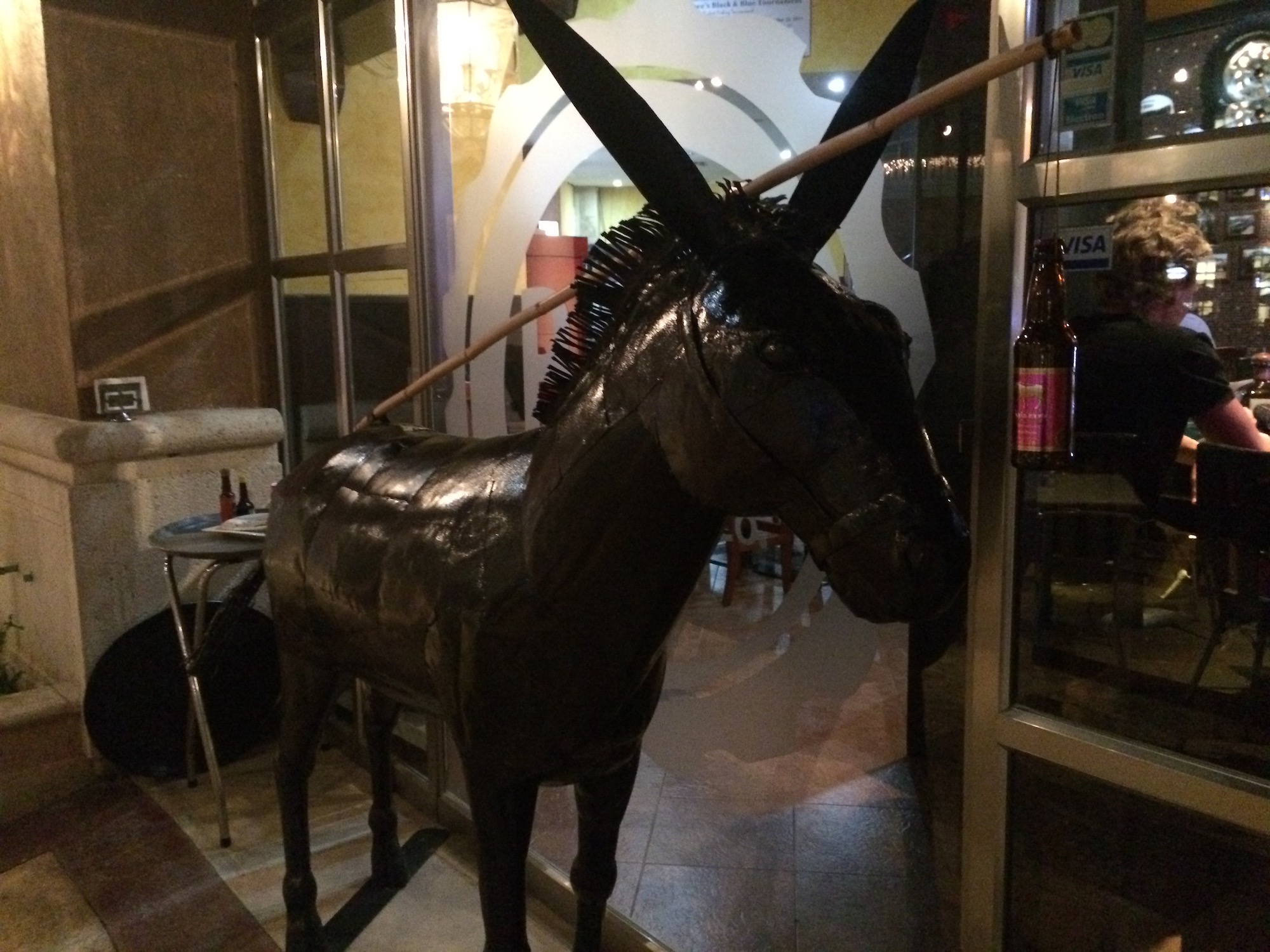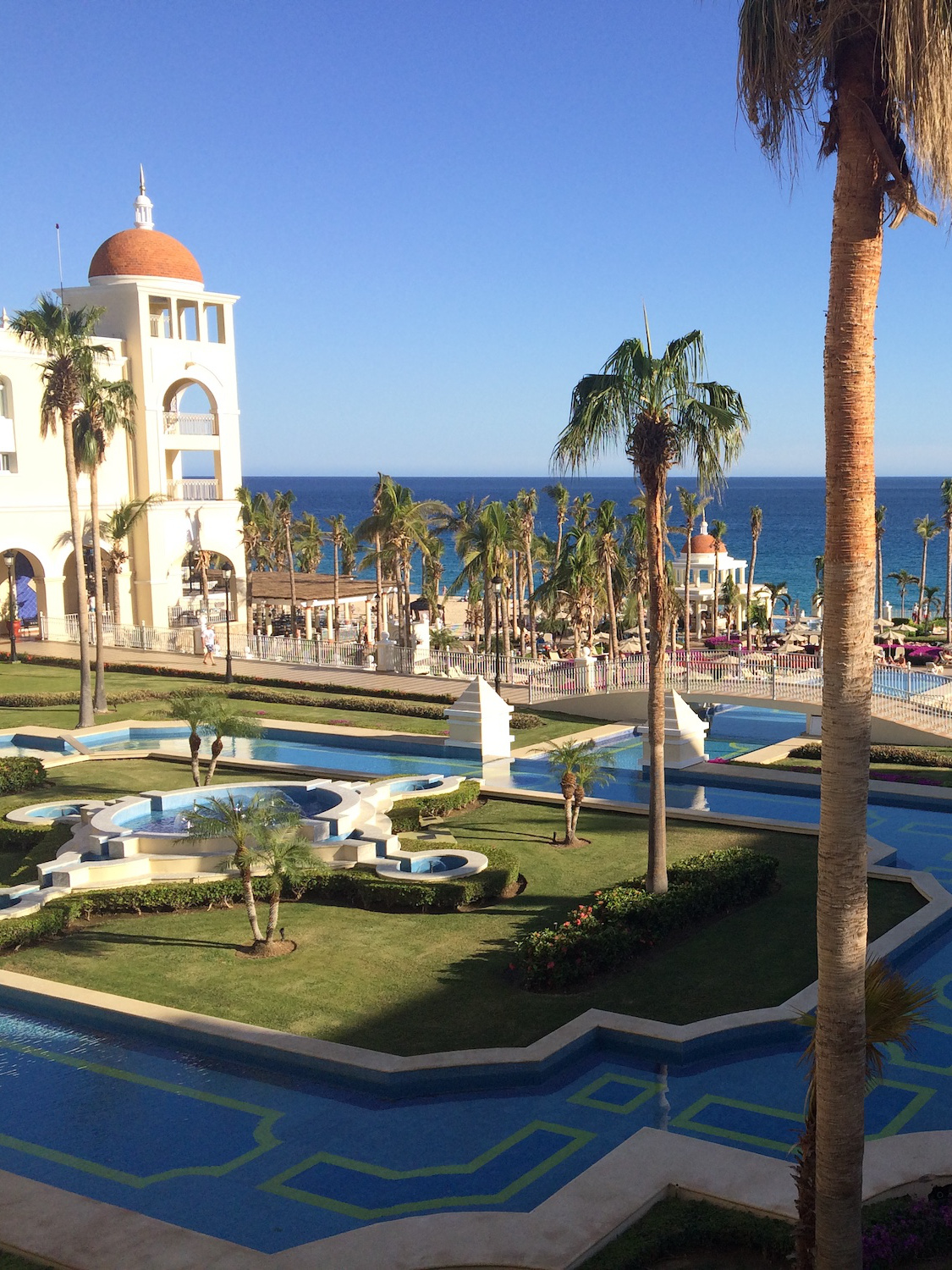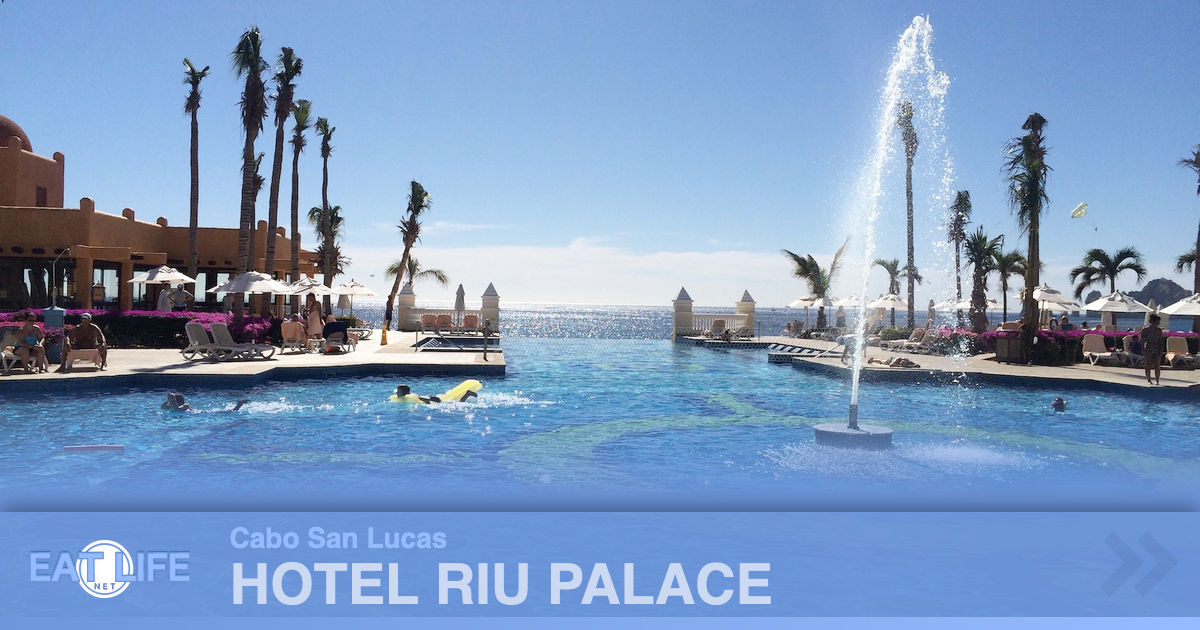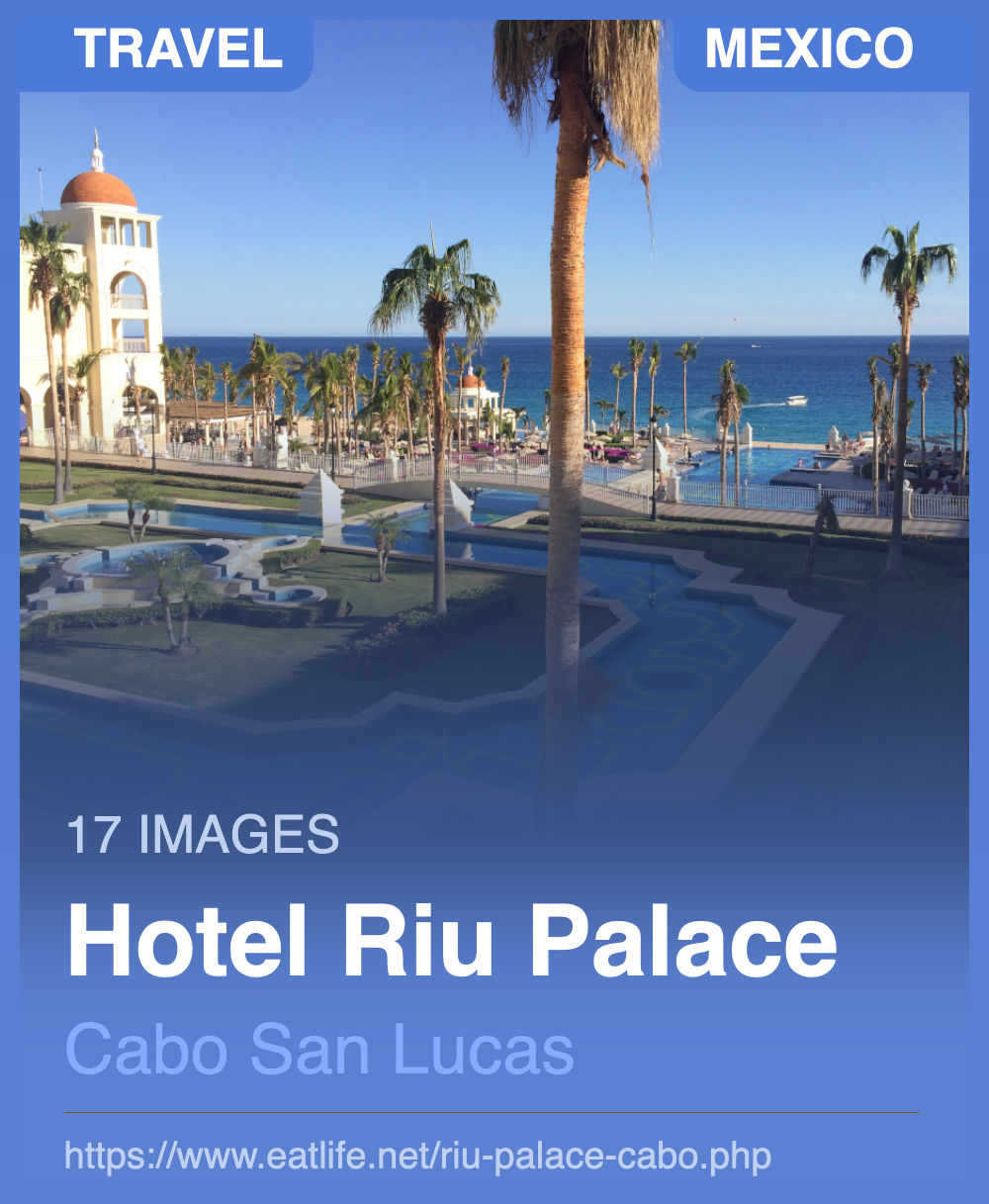Hotel Riu Palace Cabo San Lucas:
- Colonial-style five-story resort
- 640-room
- Located on the two-mile Medano Beach
- 3 miles from downtown Cabo San Lucas
- All-inclusive
Unlimited meals and 24-hour snacks and beverages. Unlimited domestic alcoholic beverages, tropical juice cocktails and soft drinks. Unlimited use of the in-room minibar and liquor dispenser. Daily activities and nightly entertainment.
- Beachfront
- 32,000 square meters of gardens featuring native plants, flowers, trees and shrubs
- All rooms feature terraces
- Built: 2004
- Renovated: 2016
Five restaurants, lobby, salon and pool bars, fitness center, sauna, Jacuzzi, hair salon, disco, 2 pools, children's pool, snack bar, solarium, conference room...
Cabo: - Means "Cape" in Spanish
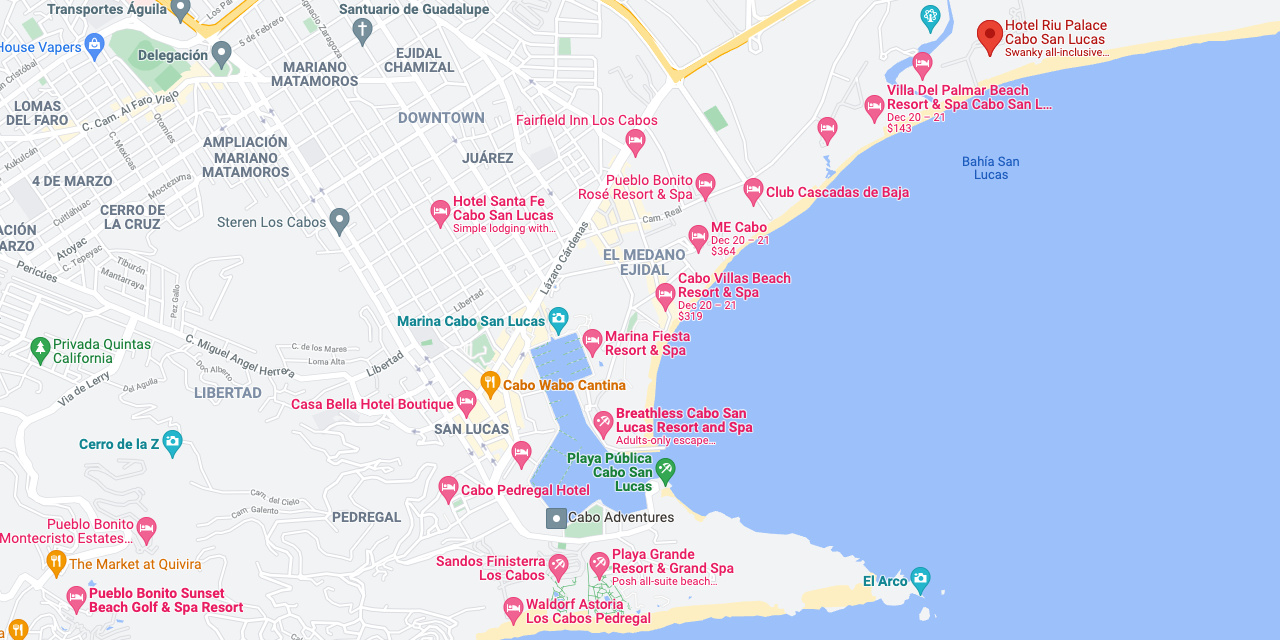
https://www.google.com/maps/place/Hotel+Riu+Palace+Cabo+San+Lucas
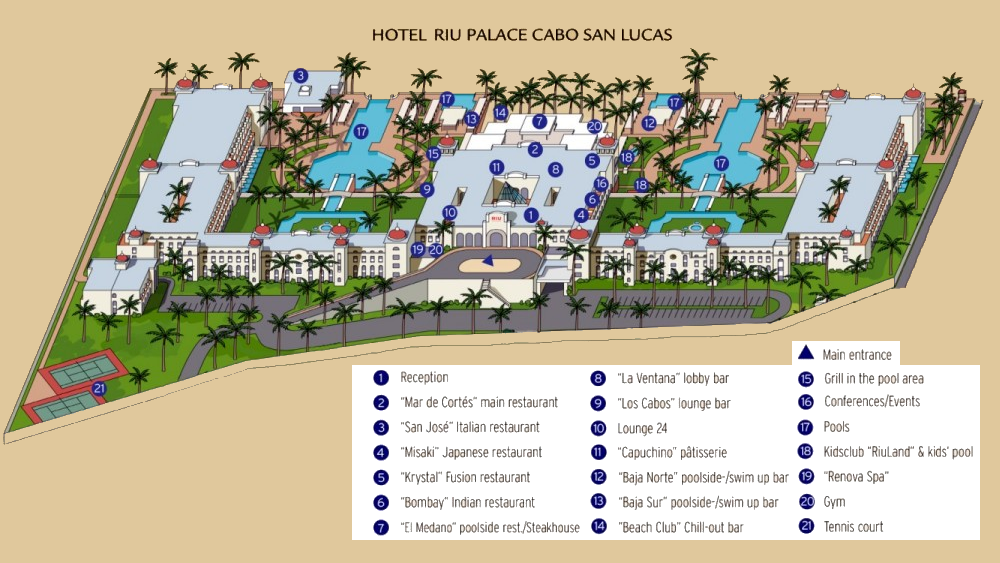
http://www.resortsmaps.com/map-RiuPalaceCaboSanLucas-LosCabos.html
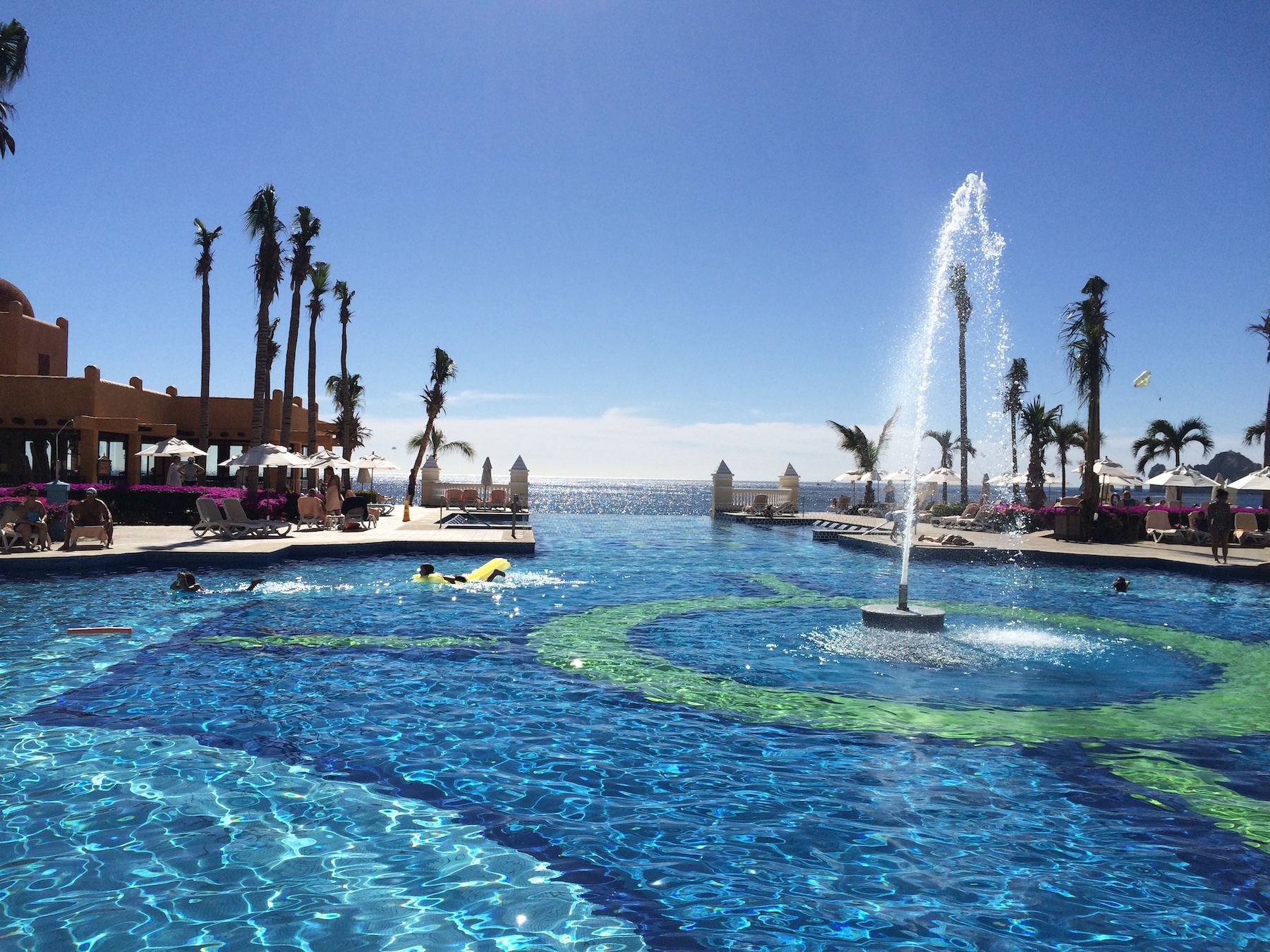
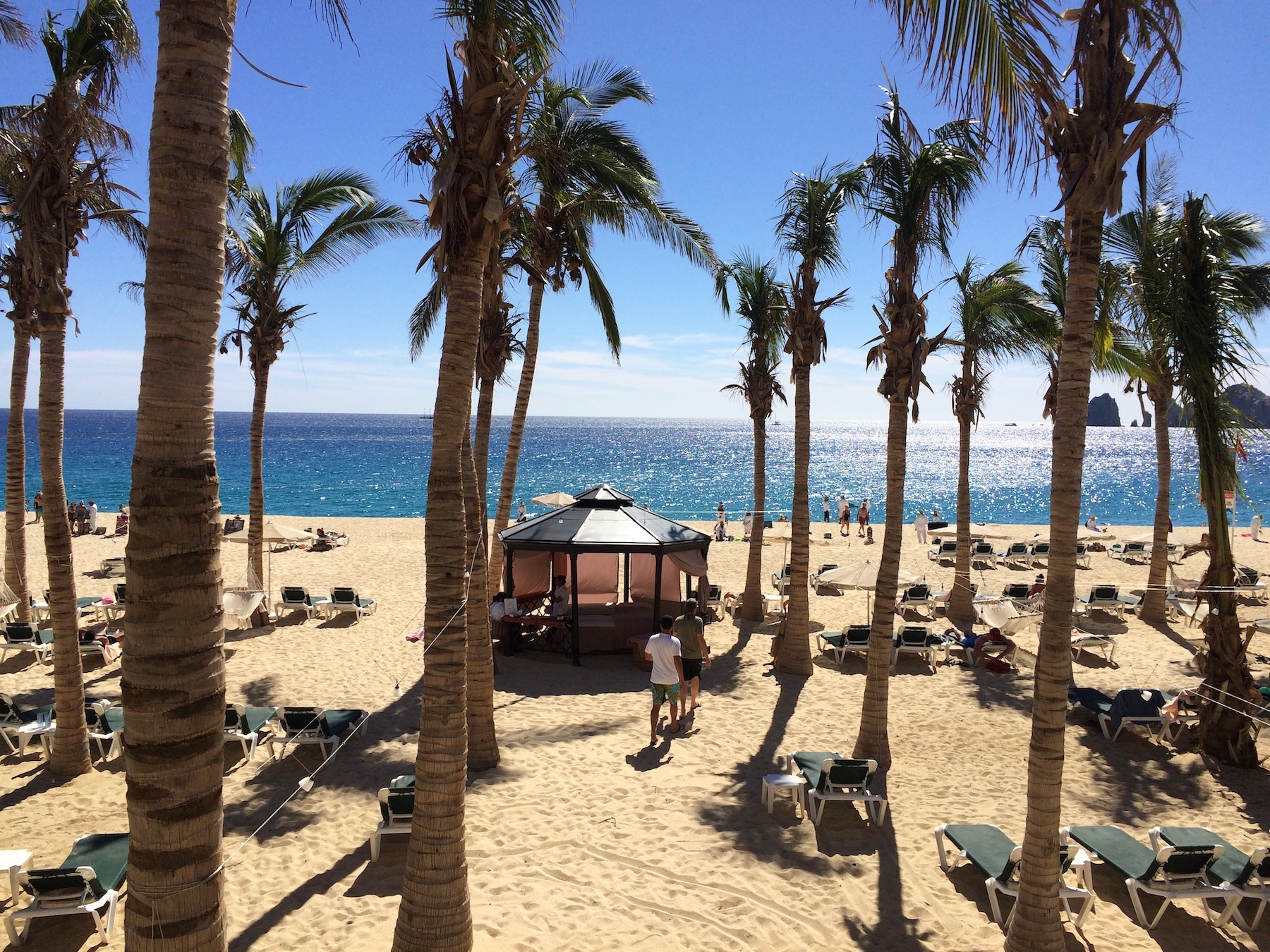
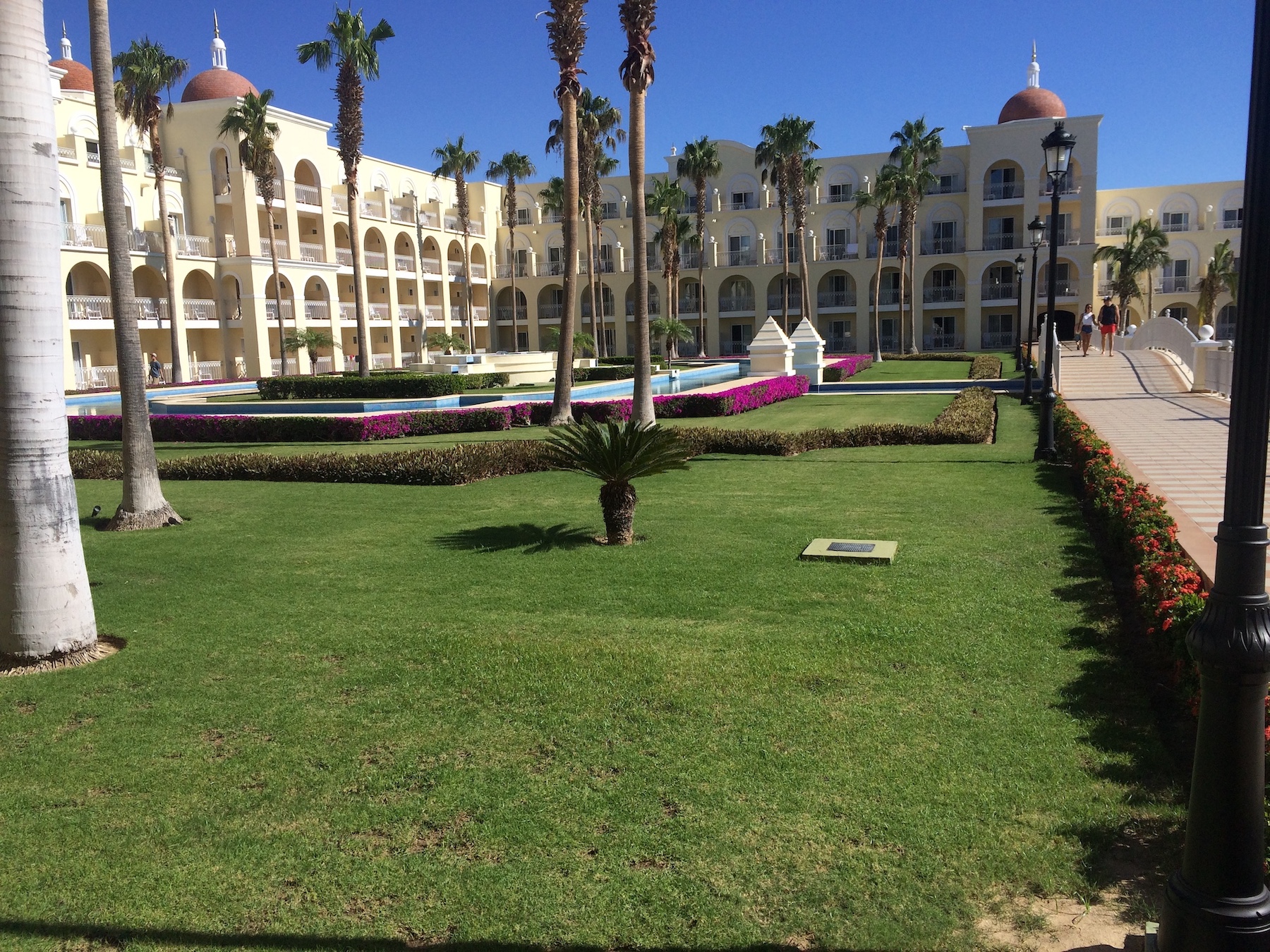
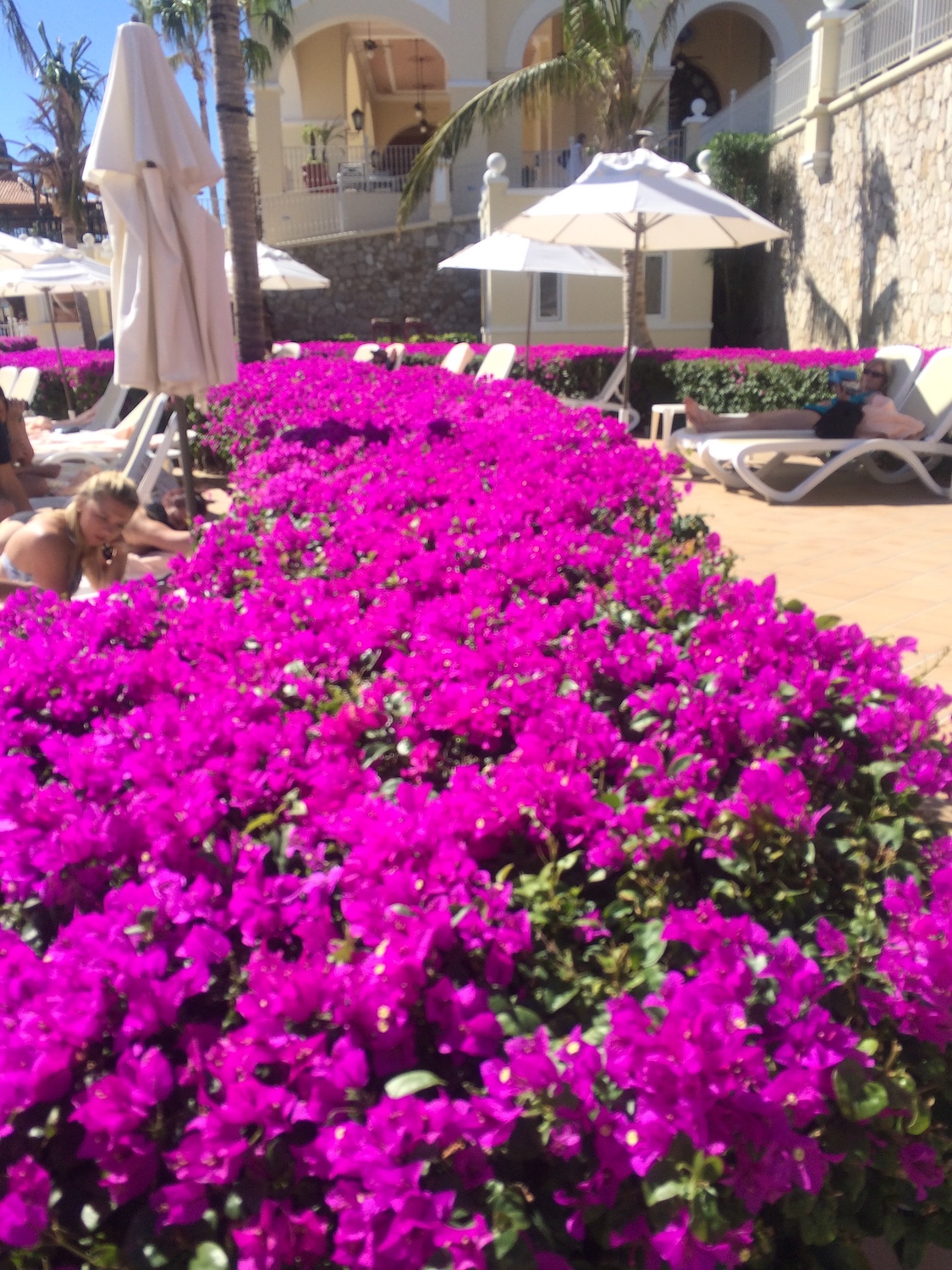
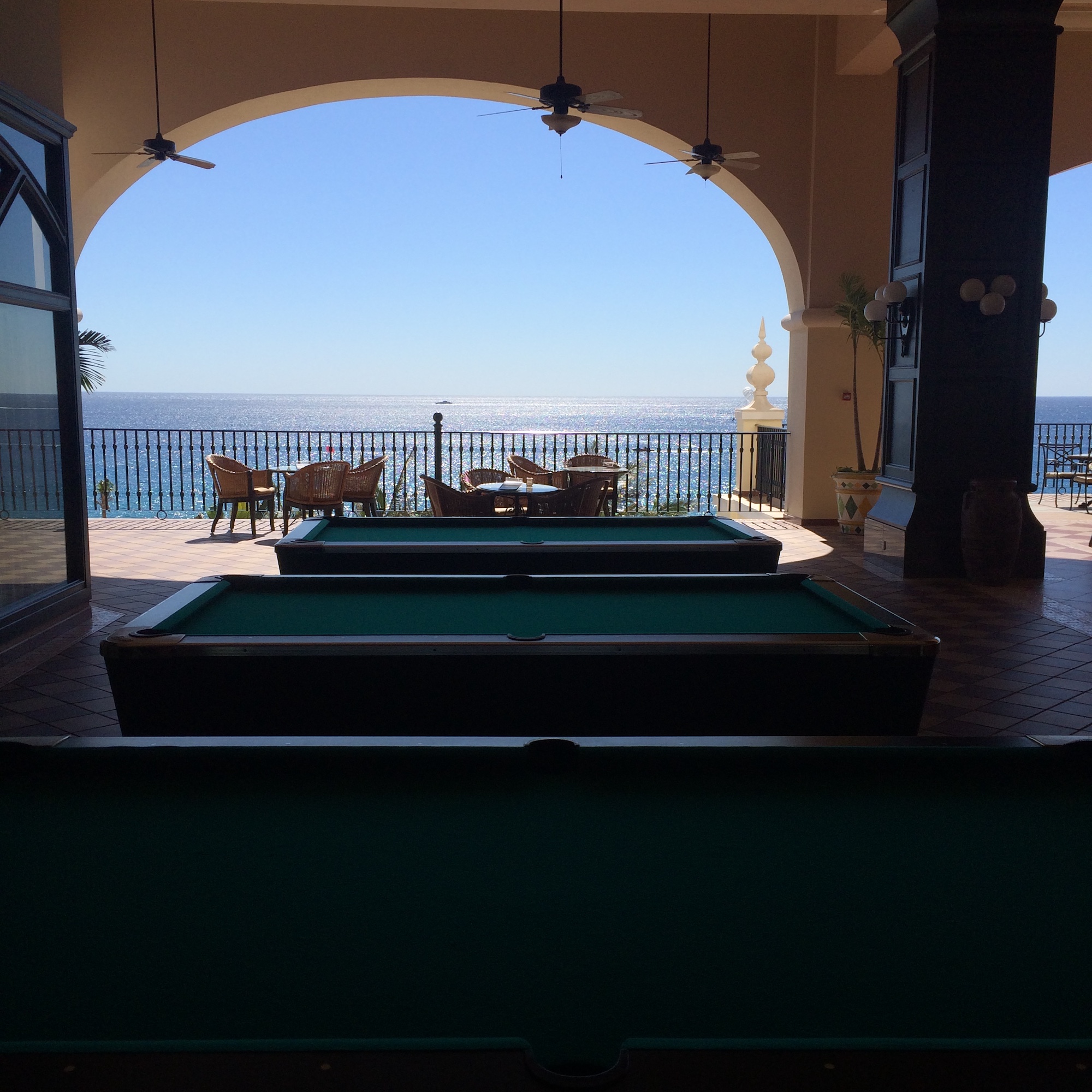
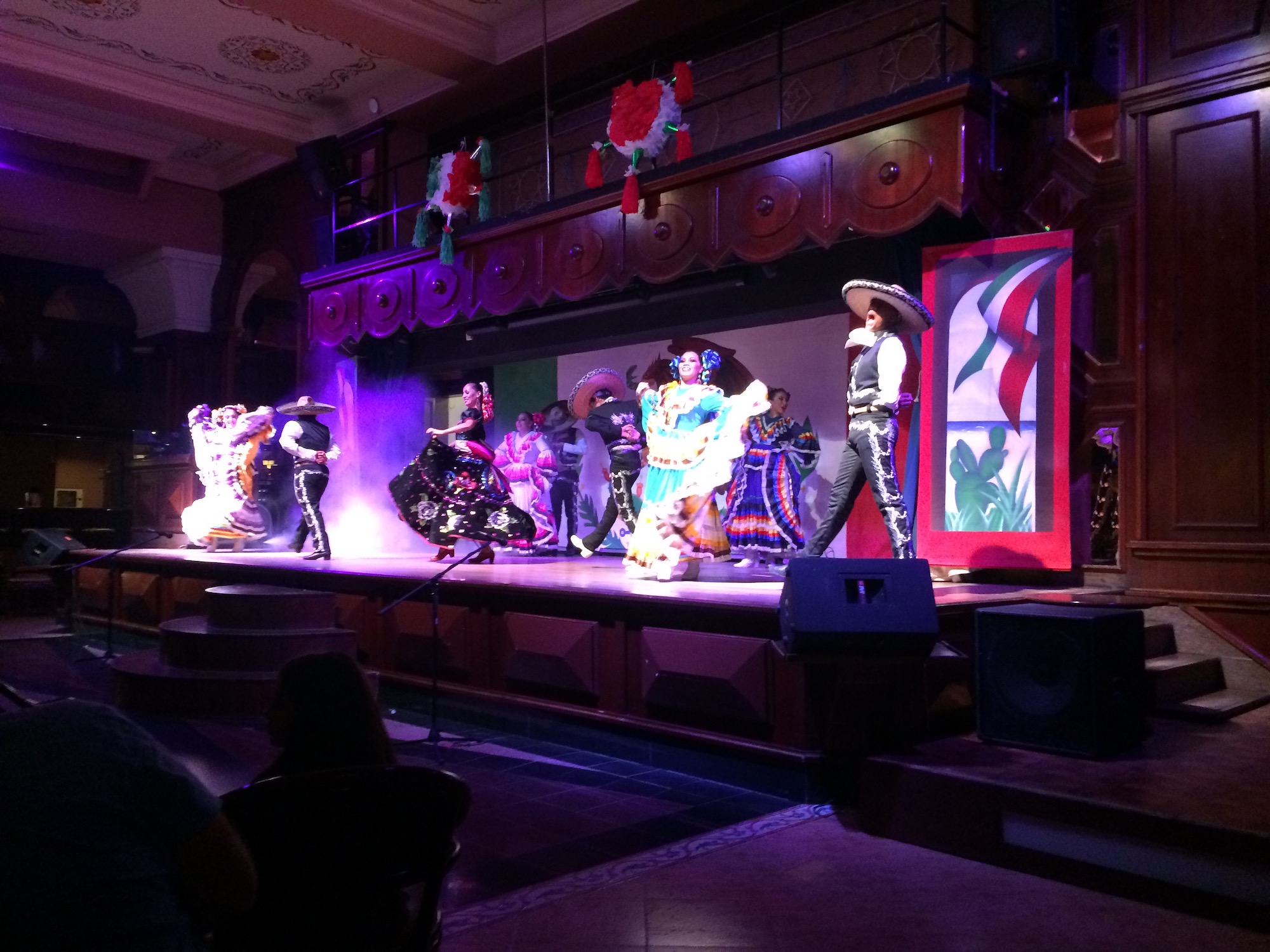
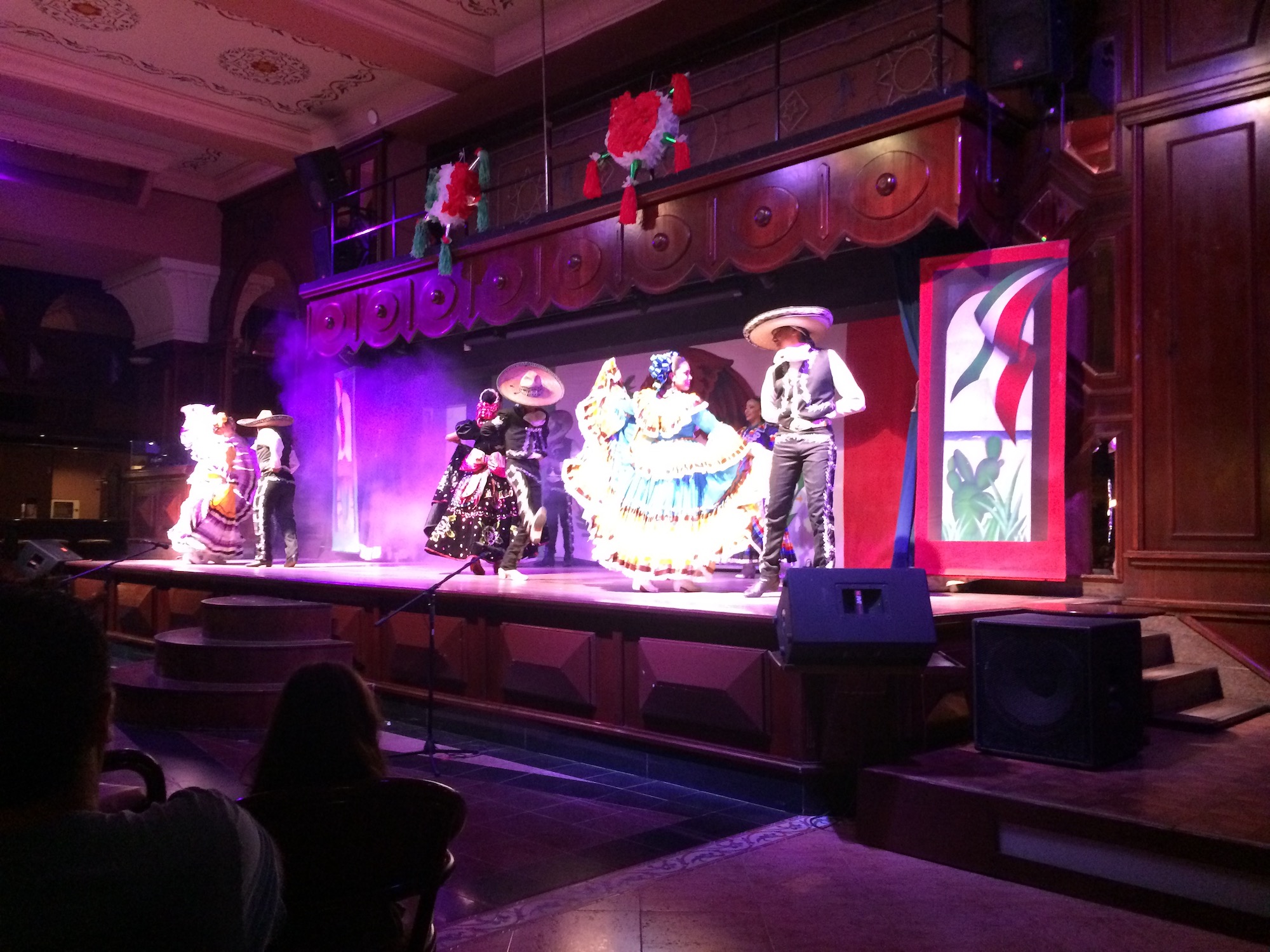

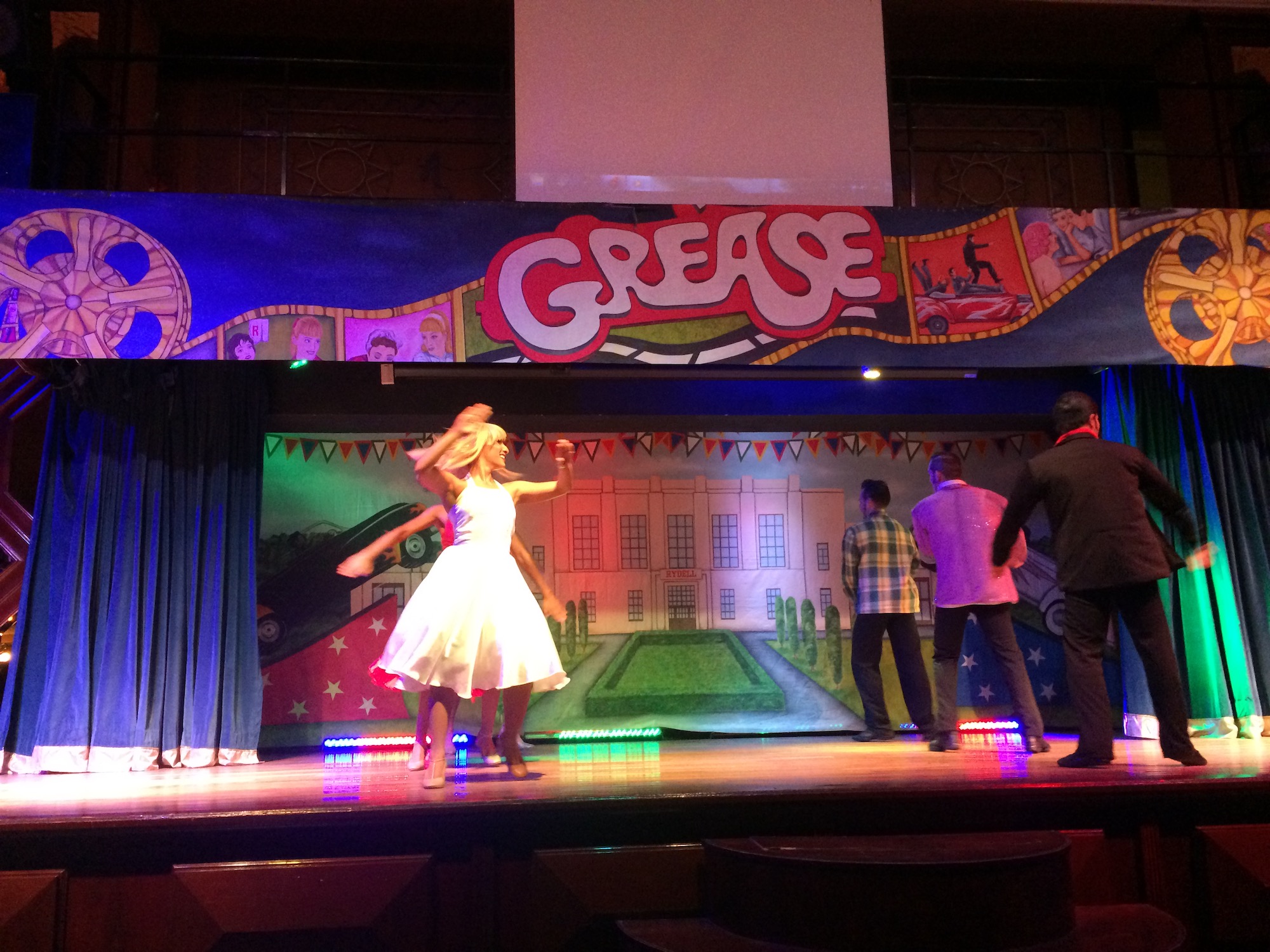
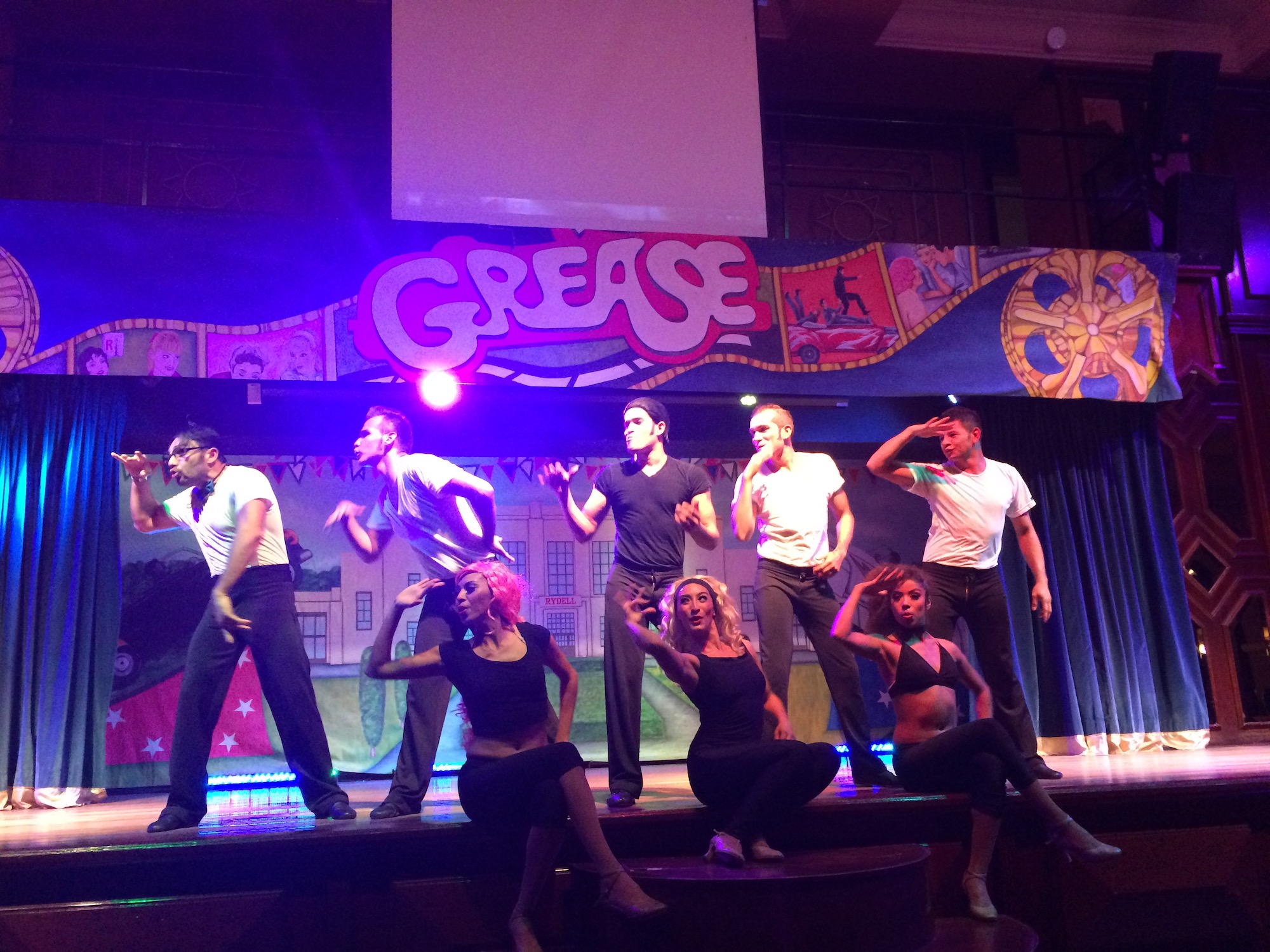
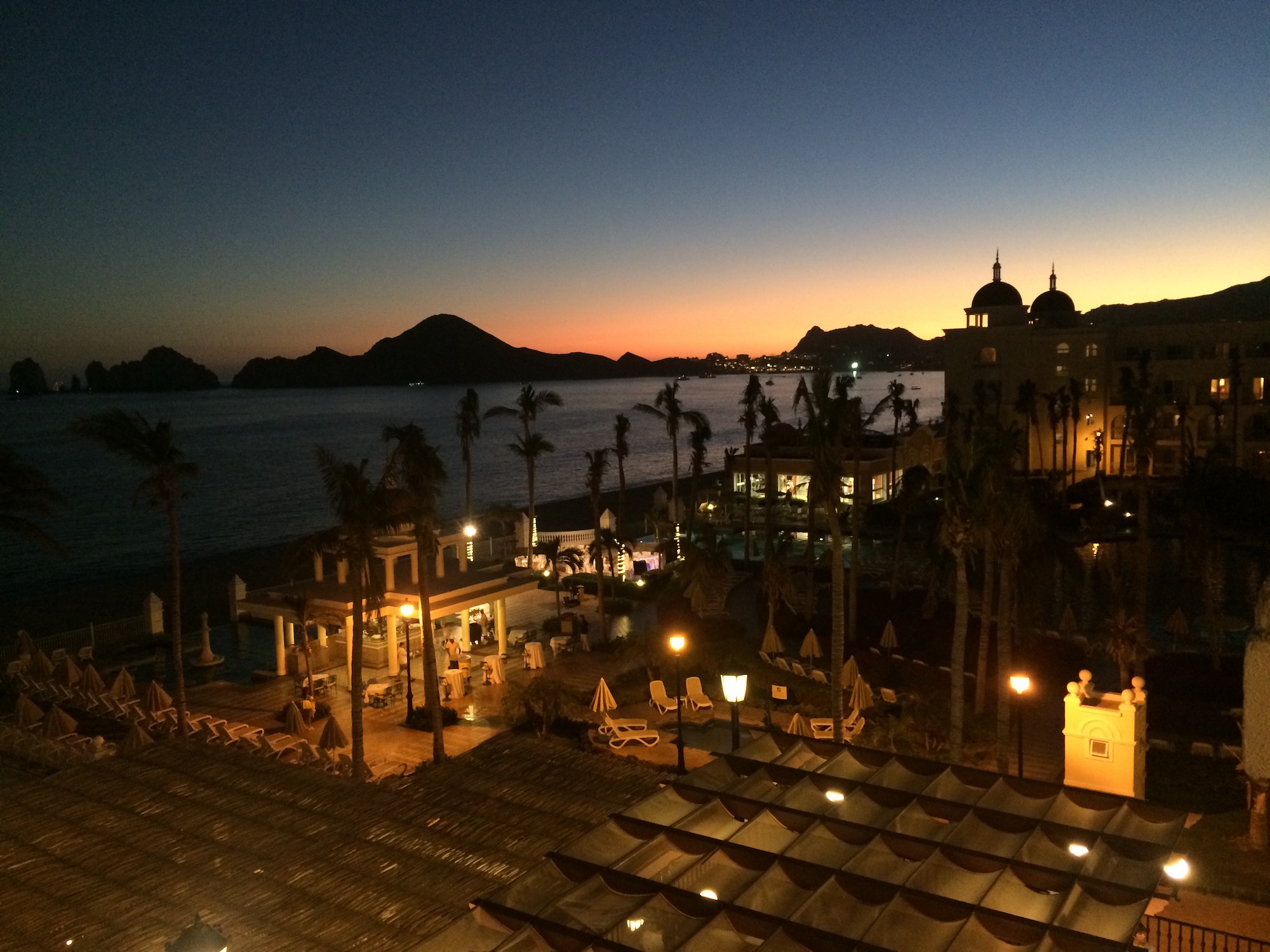
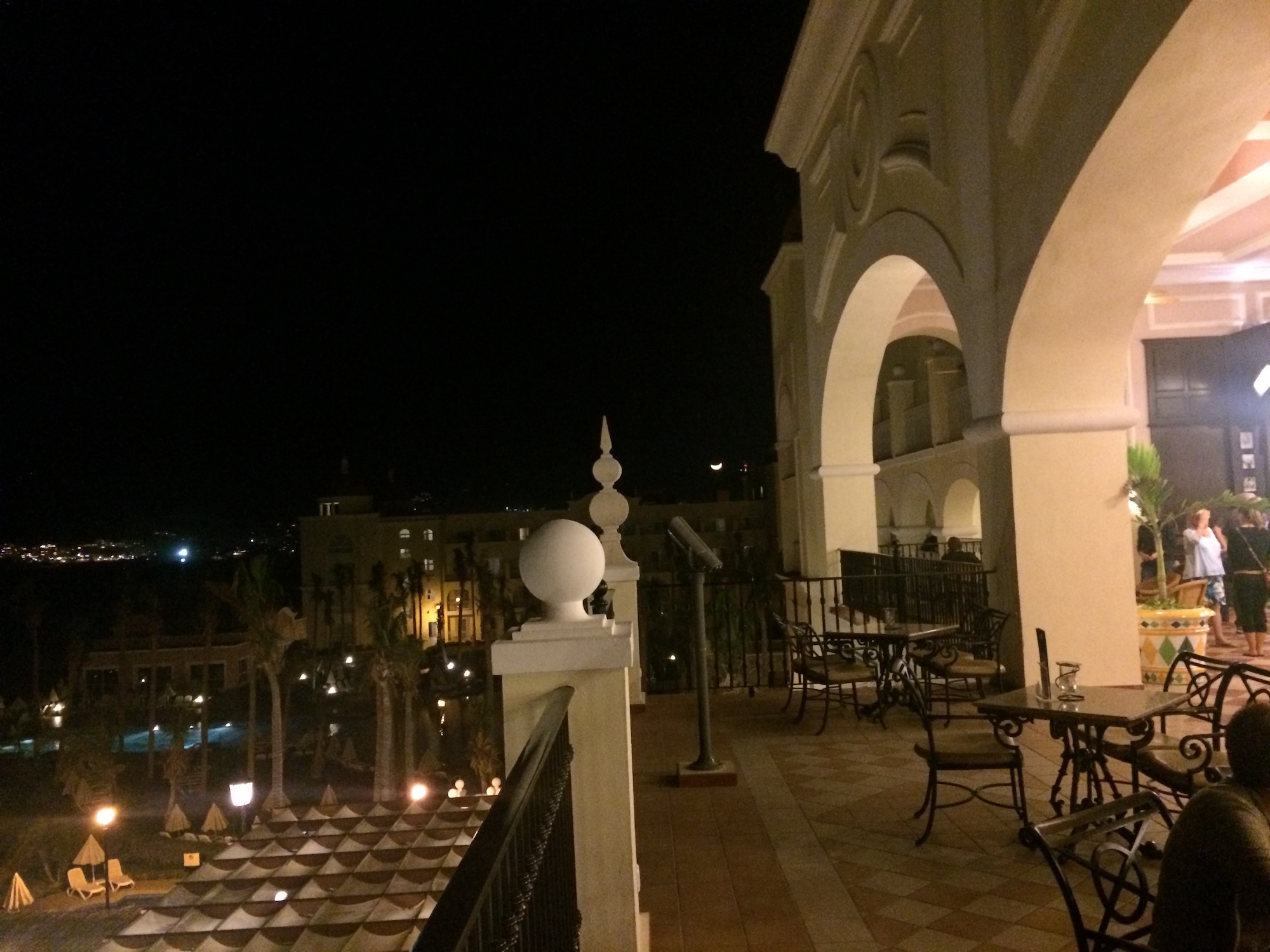
The international RIU chain was founded in Mallorca by the Riu family in 1953 as a small holiday firm and is still owned by the family's third generation. The company specializes in holiday resorts and over 70% of its establishments offer its acclaimed All Inclusive by RIU service.
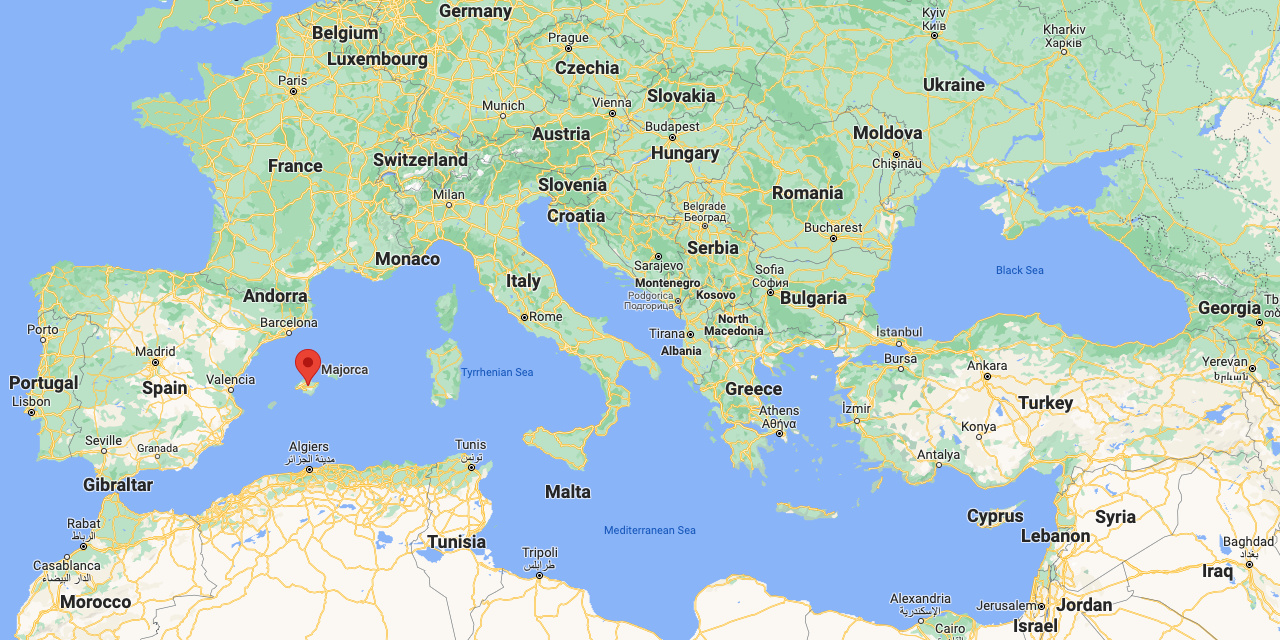
https://www.google.com/maps/place/Majorca
RIU Hotels & Resorts now has 100 hotels in 20 countries. In 2020, the chain welcomed 2.3 million guests and provided jobs for a total of 24,425 employees. RIU is currently the world's 32nd ranked chain, one of the Caribbean's most popular, the third largest in Spain in terms of revenue and the fourth largest in number of rooms.
1953 - Opening of the first hotel:
In November 1953, Juan Riu Masmitja and his wife Maria Bertran Espigule acquired, with their son Luis Riu Bertran, the San Francisco hotel, a small 80-bed establishment located in Playa de Palma (Mallorca, Spain). This was to be the first hotel of many in the future of the international hotel chain. The 60s saw a real tourist boom in the Balearic Islands, which Luis Riu Bertran actively contributed to through his partnership with the German tour operator, Dr. Tigges (known as TUI since 1968). Following the consolidation of charter operations between Germany and Mallorca in the summer months, Luis Riu went one step further in strengthening the development of tourism in the Balearic Islands, by also promoting Mallorca as a winter destination. During the 60s and 70s, the company underwent significant expansion in the Balearic Islands, consolidating its business partnerships all the while.
In 1976, Riu Hotels S.A. was established along with TUI (Touristik Union International) in order to build new hotels.
1985 - First hotel outside the Balearic Islands:
In the 80s, RIU began to expand into other destinations. Its first hotel outside the Balearic Islands opened in 1985, on the island of Gran Canaria. The Riu Palmeras at that time gave a hint of the successful initiative it was to become, as today the Canary Islands are one of RIU's main destinations, with over 20 hotels located there.
1991 - First international hotel:
With the 1990s came the opening of RIU's first international hotel. The Riu Taino began to welcome its first guests in November 1991 in Punta Cana, in the Dominican Republic. This was the first step in RIU Hotels' impressive growth in America, where it currently has over 30 hotels. The partnership with TUI was strengthened even further in 1993, with the creation of the company RIUSA II SA, with TUI and RIU each owning 50%, which operates the RIU line of hotels.
1998 - Generational change:
Following the death of Luis Riu Bertran, his children Carmen and Luis Riu, the third generation of the family, took on the post of managing directors of the chain, a position they continue to hold today.
2010 - First urban hotel:
During the 1990s and the first decade of the 2000s, RIU underwent great expansion in countries like Mexico, Dominican Republic, Jamaica, Aruba, Bahamas, Cape Verde, Costa Rica, Morocco, and Tunisia. After 56 years specialising in holiday accommodations, in 2010 RIU Hotels & Resort embarked on one of its greatest challenges as a company: the launch of its Riu Plaza urban brand. In September 2010, the Riu Plaza Panama opened its doors in Panama City; it was the first RIU hotel in the country and the first of RIU's city hotels. The company's commitment to this new line of business has rapidly consolidated and today RIU has urban hotels in major cities of Europe and America.
2016 - First hotels in New York and Asia:
In 2016 the most emblematic project of the Riu Plaza line materialised: the opening of the first RIU hotel in New York City, the Riu Plaza New York Times Square, located in the heart of Manhattan. Internationalisation has been a key to RIU's success over the past 25 years, and will continue to be true thanks to the company's new challenge: Asia. When RIU opened its first hotel in Sri Lanka in 2016, it exported to Asia the business model for vacation hotels that it brought to the Americas in the '90s with its first hotel in the Dominican Republic. The hotel chain is continuing to implement major projects on the continent, such as the 2019 launch of the Riu Palace Maldivas hotels with 176 rooms and the Riu Atoll Classic with 264 rooms, both in the Maldives, and its plan to open Dubai's first 24-hour all-inclusive resort in 2020, together with its partner Nakheel.
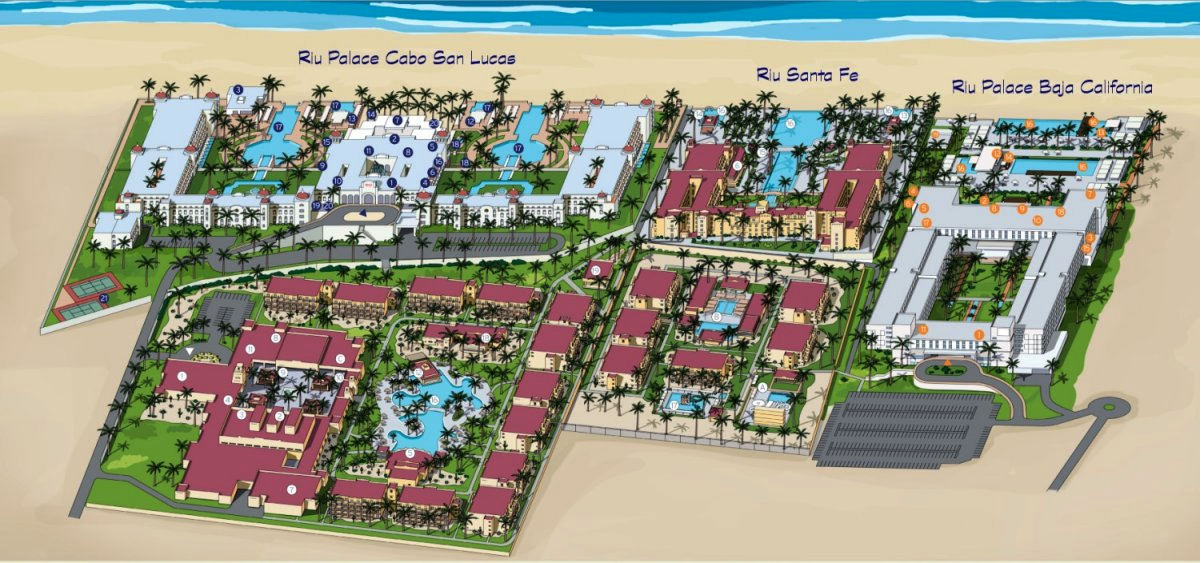
- Hotel Riu Palace Cabo San Lucas
- Hotel Riu Santa Fe
- Hotel Riu Palace Baja California
http://www.resortsmaps.com/map-RiuPalaceCaboSanLucas-LosCabos.html
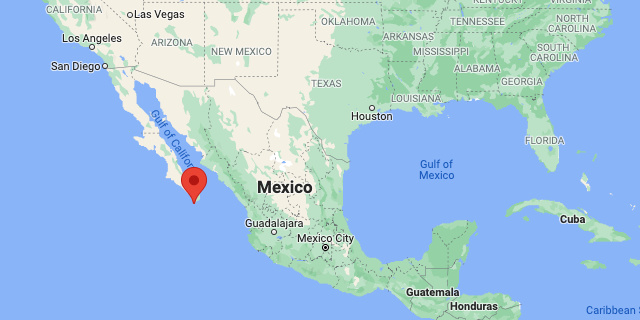
https://www.google.com/maps/place/Cabo+San+Lucas,+BCS,+Mexico
The Sea of Cortes: - aka the Gulf of California
Hernan Cortes sat in his headquarters on the Isthmus of Tecuantepec scheming about what he might conquer next. Bingo! A shipwreck survivor reported an island ten sailing days north that was populated by Amazons and was rich in gold and pearls. That sounded to Hernan like the fabled island of California ruled by the Amazonian Queen, Califia. He fairly drooled at the thought. "Andale, hombres", he told his ship builder, "get on with it".
In 1535, with three galleons and a compliment of over 600 men and women, Hernan sailed into a tranquil bay which he promptly named Santa Cruz. It didn't take him long to figure out that there weren't no gold and there weren't no Amazons, neither. He packed up and sailed south for the last time.
But there were pearls in the waters around Santa Cruz. Sebastian Vizcaino set up a pearl fishing colony there in 1596 knowing full well that he was certain to become a wealthy man. He found a few pearls, but not enough to support his expedititon; he also found a whole bunch of unsociable Indians. The only thing Sebastian got out of his misguided tour was an excellent chart of the Mar de Cortes. The only thing California got out of Sebastian's misguided greed was a new name for the pearl-less bay: La Paz.
During that period, Spanish merchant marine interests had established a trade route from Luzon in the Philippines to Acapulco in the south of New Spain. They were transporting ton upon ton of oriental silk and spices; along with Mexican gold and silver with which to buy the treasures. The Spanish monarch loved the silk and spices; English pirates became inpassioned over the silver and gold.
The 16th of September is a very special day in Mexico. It's Mexico's Independence Day. It's also the day that Sir Francis Drake entered the "Sea of the South" with a quintet of warships in 1578. What do you suppose he had on his mind? The Spanish had an inkling of what it might be.
Pirate stories abound in Baja. Some true, others...well, maybe not exactly true. True it is that Thomas Cavendish sacked the "invincible" galleon Santa Ana off cape San Lucas in 1587. And true it is that a number of "Dutch Hens" entered the Skull and Crossbones trade against the haughty Spanish. Joris van Spilbergen was the most famous of the group. Racing up and down the Pacific coastline, the Pirates had a field day. And when they were not plying their trade they were hanging out at Cabo San Lucas and San Jose and La Paz just R & R-ing-it - and maybe stashing a little treasure. The Spanish of course, were not happy. The only people taking any spoils out of the new world were the English and the Dutch and they didn't know how to get there until a Portuguese named Magellan showed 'em the route.
So, the Spanish Crown told the Jesuits to go to California and settle down the Indians. "Make Christians out of 'em" spathe the King. The Crown wasn't especially interested in the future of the Indians but he figured that if they could colonize the peninsula and Alta California it would keep the Dutch, the English, and by that time the Russians at bay.
The Jesuits were delighted. They could go to an inhospitable land, suffer as no missionary had ever before suffered, and save souls. And that they did; but...some people simply don't like change. The Indians were not happy campers. They didn't much like wearing clothing. They did not like monogamy. And they certainly didn't cotton to the Jusuits. So, in 1734, a bunch of the local boys got together and figured out how to run the Fathers plumb out ot the New World. California, as it was called then, took a nap for a couple of hundred years.
In 1844, U.S. President James K. Polk sided with a bunch of ornery Texans who had been plumb tired of paying taxes to "Mexicun" generals. The Mexican-American War got so rediculous that even Mexico couldn't figure out why "green-go" troops were marching on La Paz and San Jose del Cabo. At the bargaining table the Americans conceeded they really didn't want any more desert than they'd already stolen, so they left Baja California to the "Mezicuns". After all, there weren't no oil, no gold nor silver, no natural resources, and no water. "Keep it Amigos", said the norteamericanos, "keep all a it".
However, the phrase "natural resources" has taken a bit of a twist in the last couple of generations.
Ask the question, "Who was the first Anglo to put The Baja on the road-map to prosperity?" and you're likely to get six different answers.
Shortly after World War II, a group of Southern Californians learned that they could fly to La Paz and then travel by rutty roads to the shores of the Mar de Cortes. "Why?" people asked. Little by little word leaked that the Sea of Cortes was teeming with fish, was protected from prying eyes, and possessed weather "as good as God will allow" in the Baja. There were no roads there. Only long range pleasure yachts and private aircraft need apply. It was exclusive. The names of the shakers and movers were exclusive: Bing Crosby, Phil Harris, Desi Arnaz, and The Duke. About 1948 they pooled their coins and built hotel Las Cruces on the East Cape. The sign read: "PROPRIEDAD PRIVADO" PRIVATE PROPERTY
Ten years later the equally exclusive hotel La Palmilla was built near San Jose; Hollywood money was rumored at work there too. It didn't take long for W. Matt (Bud) Parr to figure out a road map to his future and build hotel Cabo San Lucas. Parr would eventually but the Hacienda and double its size. Cabo was definitely on the map.
Ex - U.S. Air Force pilot Luis Coppola put up hotel Finisterra near the very end of the cape and Luis Bulnes quickly countered with hotel Solmar; Cabo was in the thick of the race for the tourist dollars.
Los Cabos would slumber for a few years while adjusting to the sobriquet "Tourist Destination". A peninsular highway, completed in 1974, opened the Peninsula to Middle America. When Los Cabos International Airport was expanded in 1986, Los Cabos' lure reached deep into the United States and Canada and triggered the imagination of every citizen. Marlin fishing tournaments were drawing international acclaim by this time and non-fishermen and their ladies were discovering the sun, the beaches, and romantic star-bright nights while stroling "las playas del Mar de Cortes".
The past five years have witnessed the trebling of populations in San Jose del Cabo and Cabo San Lucas and has beheld a burgeoning growth in tourism as well. Condominiums Cabo Bello, Marina Sol and Terrasol, and hotels Melia Cabo San Lucas, Melia Cabo Real, Fiesta Inn, Howard Johnson, Calinda, Posada Real, and Plaza las Glorias were operational by 1990. Meanwhile in excess of 3,000 private residences were built for foreign vacationers and retirees.
Currently, four major golf course designers have finalized their fairway and green schematics and all courses are playable. International tournaments are scheduled and a number of airlines frequently service the area. Los Cabos, as a "Destinational Resort Area: with world wide impact, is NOW.
Hernan Cortes, a Conquistador, saw no profitable future in California. The modern day Conquistadors, on the other hand, conquers not with sword and musket, but with world class accommodations and service. Hernan plundered and ran. The modern Conquistadors reinvest. It's evident they've been doing just that in Los Cabos.
As you stroll down the beach and wonder at the magnificent seascape surrounding you, take a moment to remember Hernan; the short, short sighted fellow. . .who let the "big one" get away.
Hernan Cortes, a Conquistador, saw no profitable future in California. The modern day Conquistadors, on the other hand, conquers not with sword and musket, but with world class accommodations and service. Hernan plundered and ran. The modern Conquistadors reinvest. It's evident they've been doing just that in Los Cabos.
As you stroll down the beach and wonder at the magnificent seascape surrounding you, take a moment to remember Hernan; the short, short sighted fellow who let the "big one" get away.
Cabo Life Magazine - by C.W.Ferguson
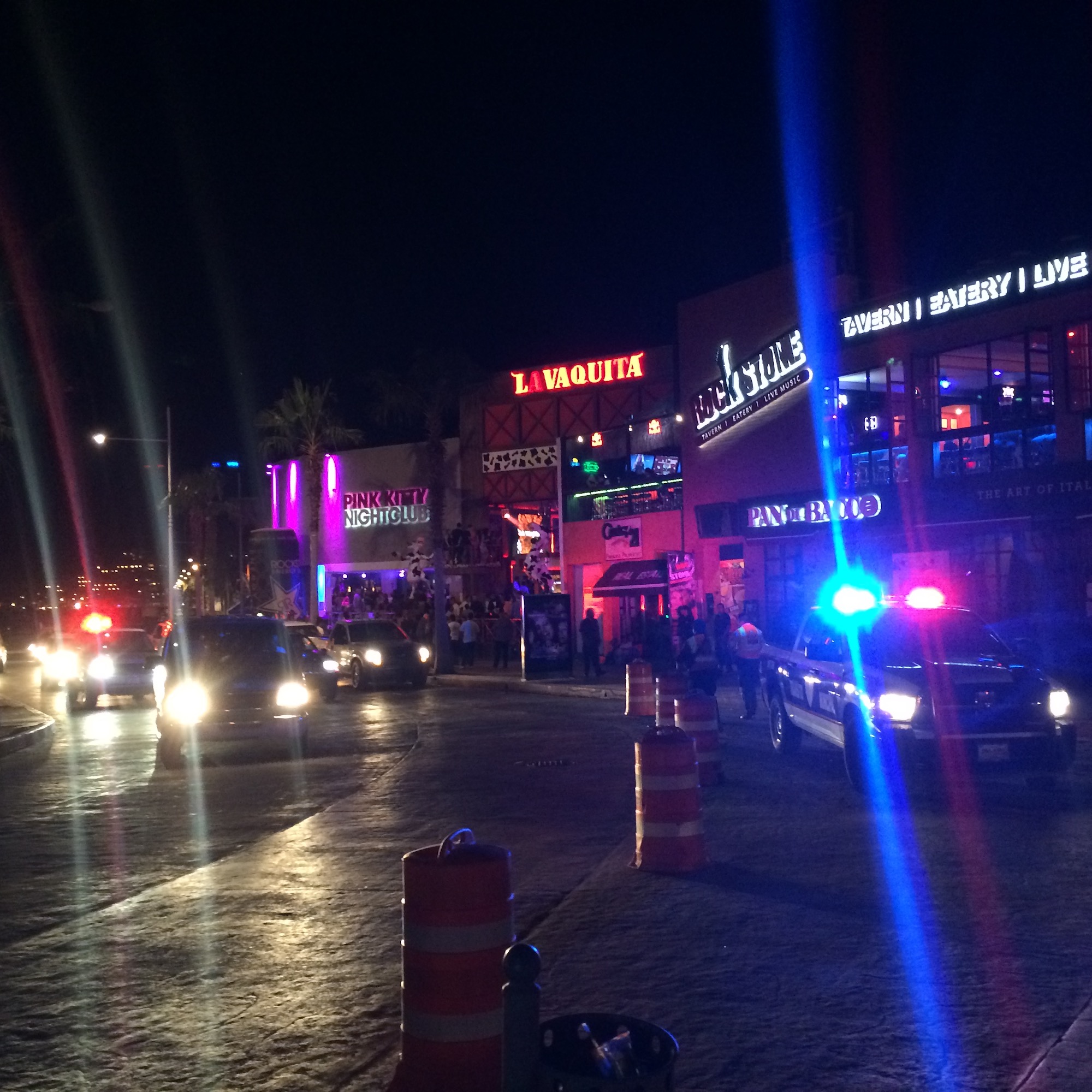
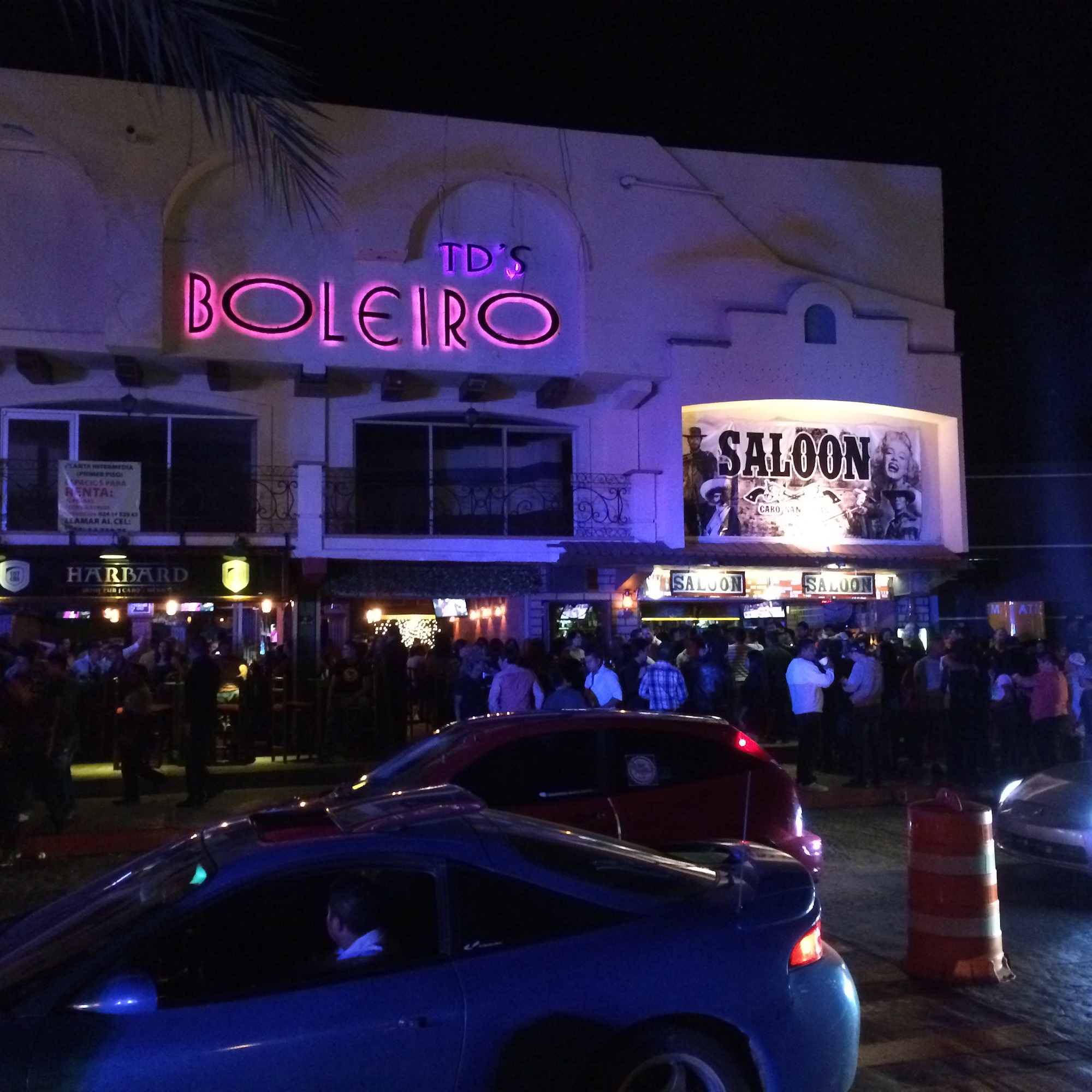
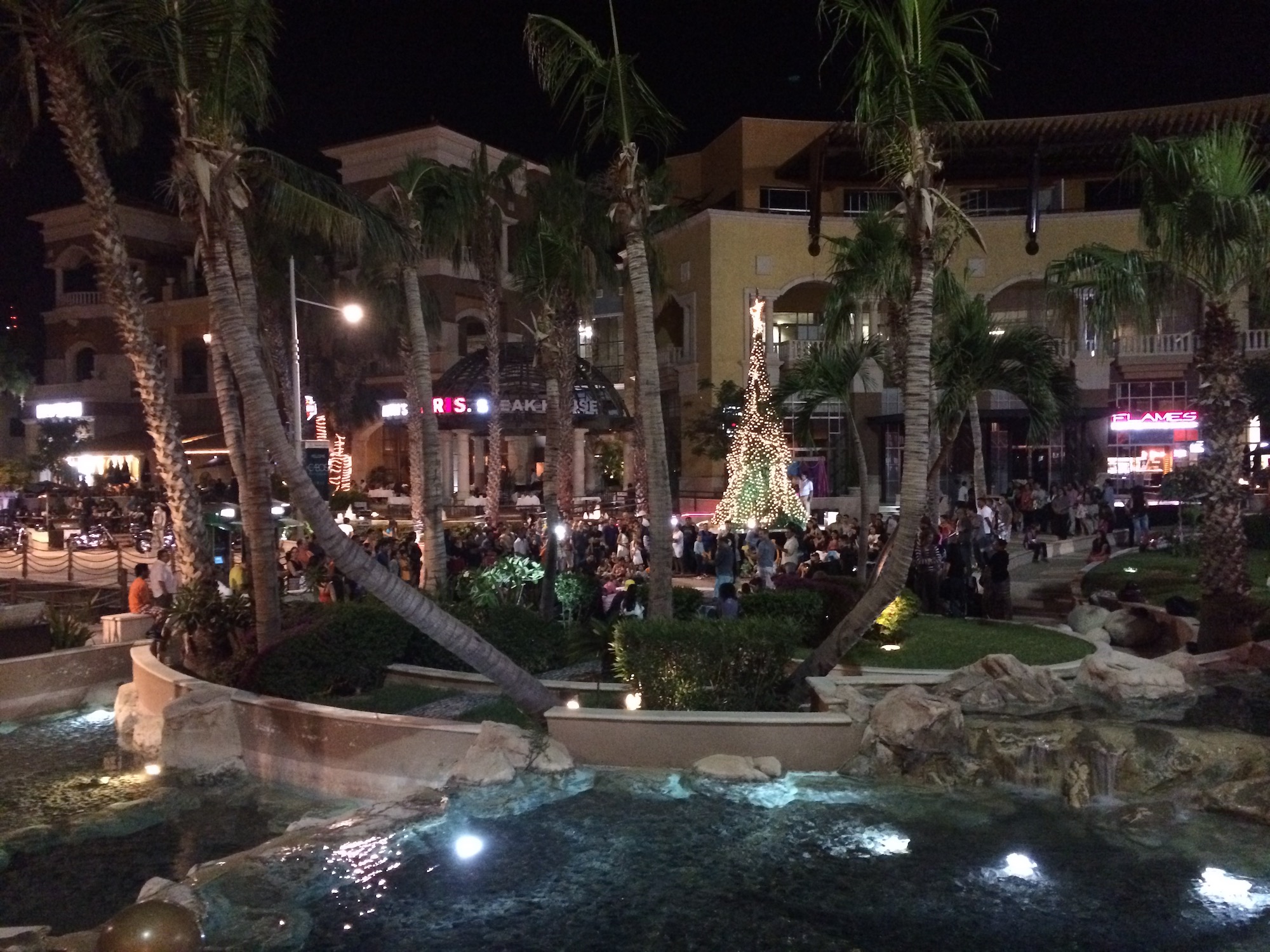
Downtown in front of Ruth's Chris Steakhouse
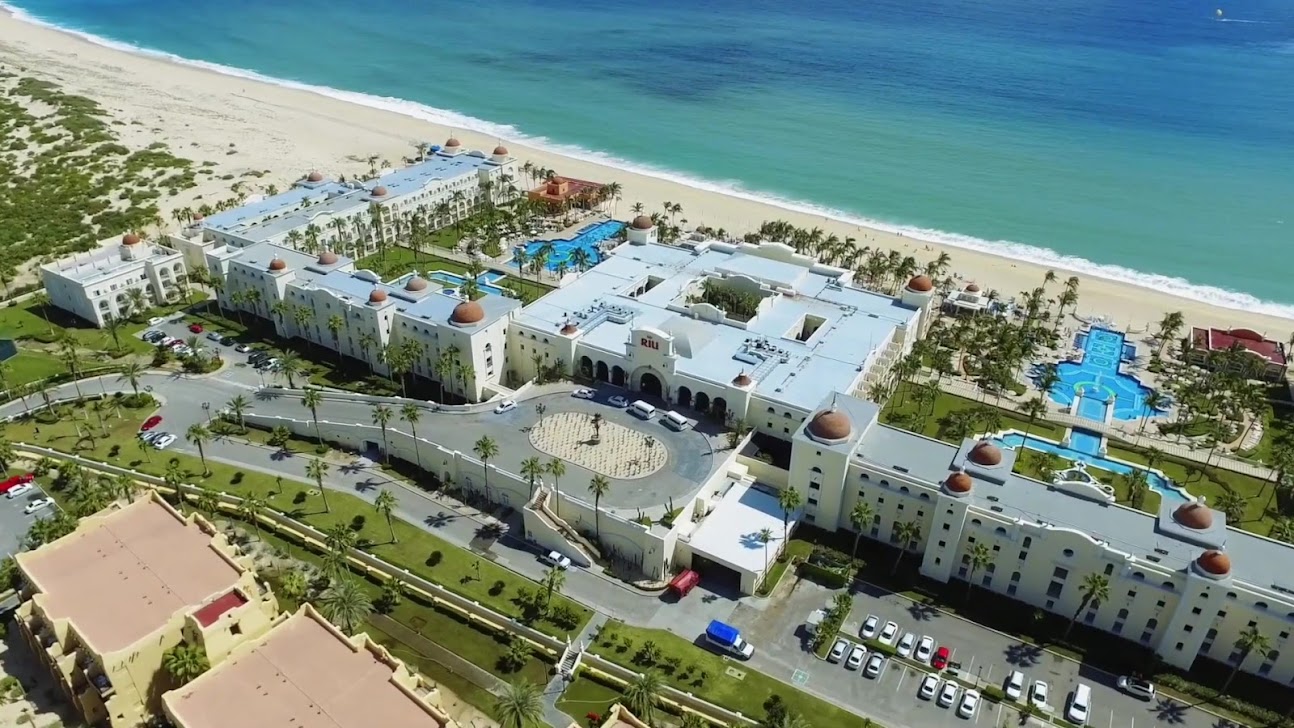
4.5 (11,000)
All-inclusive beachfront property offering entertainment, pools & dining, plus a spa & a gym.
https://www.google.com/travel/hotels/entity/CgoIkcXAo8jMiNkcEAE/overview
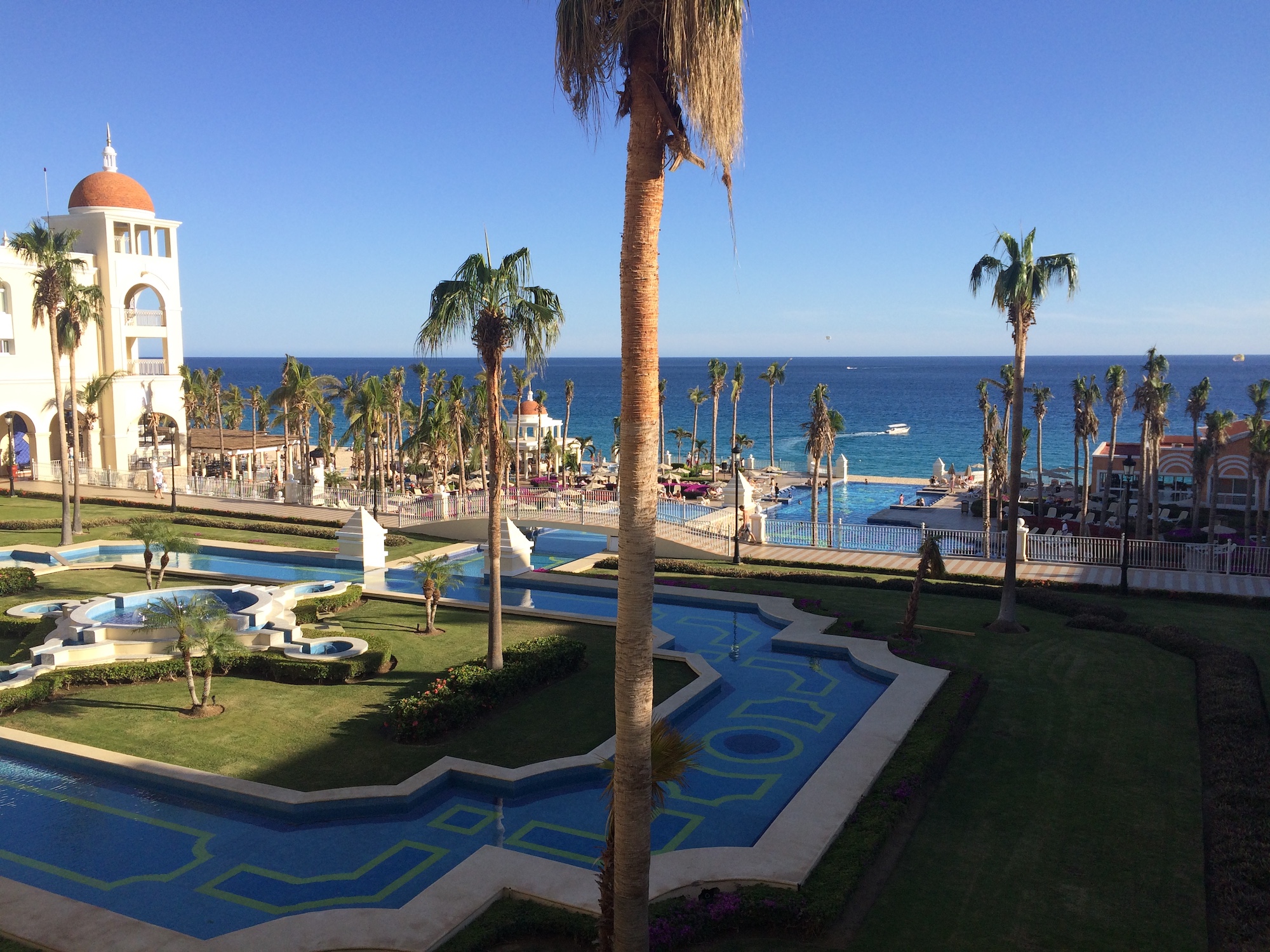

https://www.riu.com/en/hotel/mexico/los-cabos/hotel-riu-palace-cabo-san-lucas
Km. 4.5 Carretera Transpeninsular CSL– SJD
Cabo San Lucas, Baja California Sur, CP 23410 Mexico
